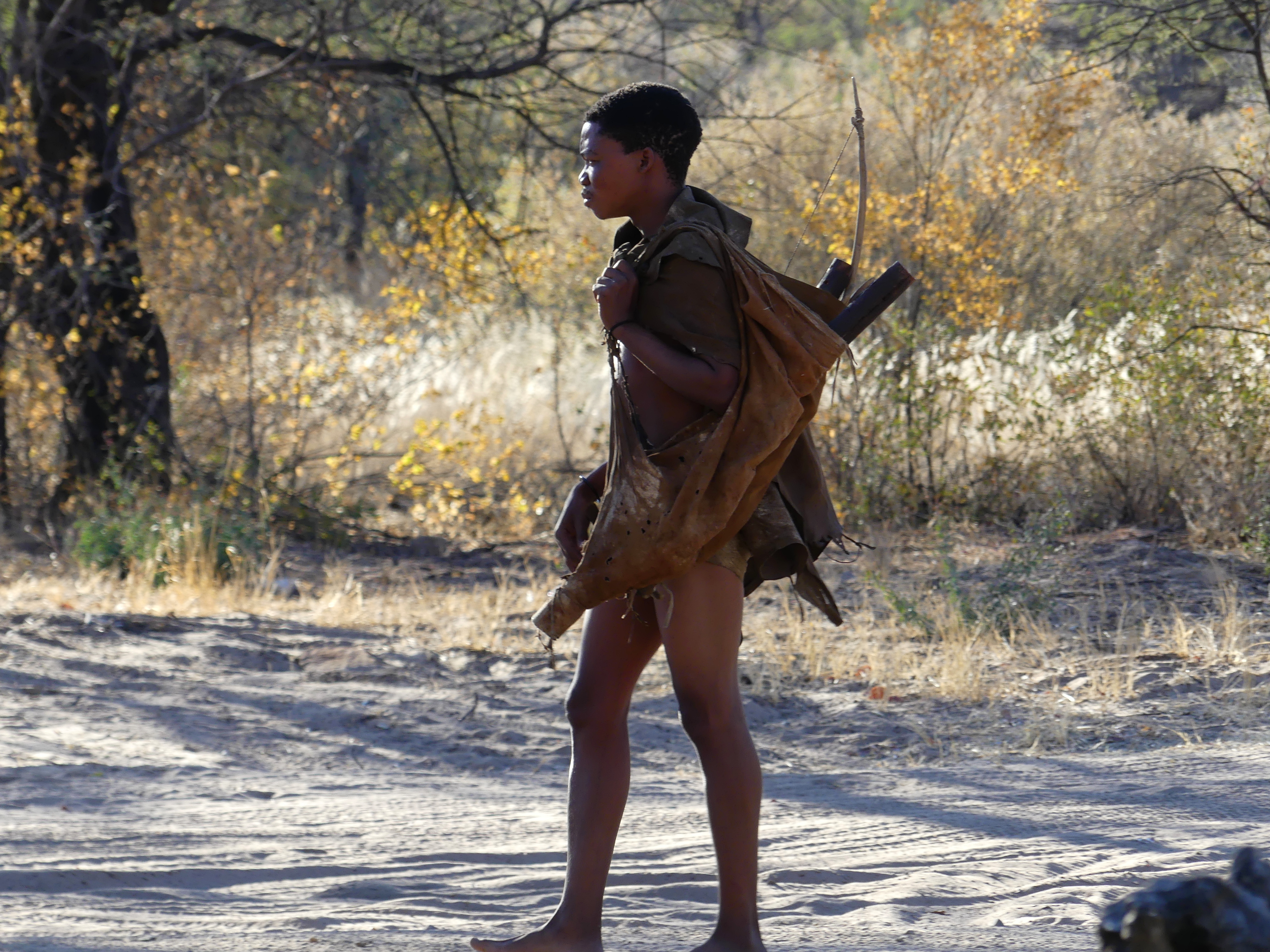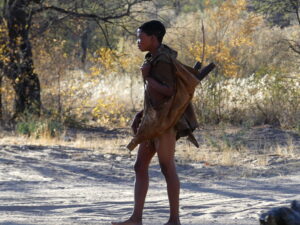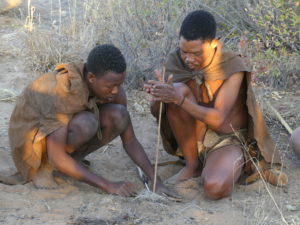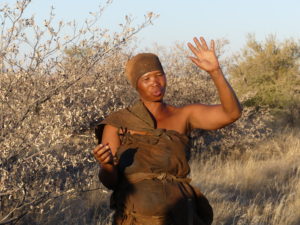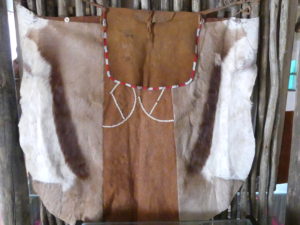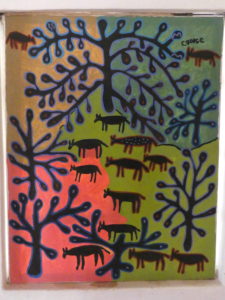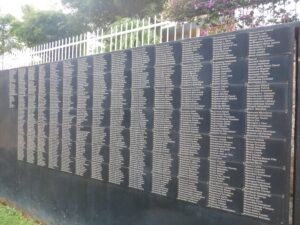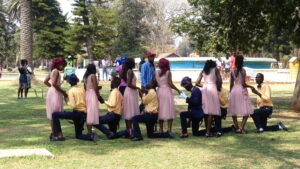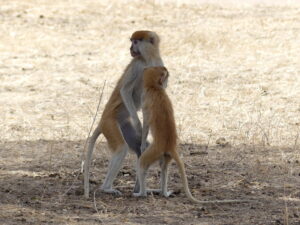In brief: The famed “bushmen” (and women) known as the San have roamed southern Africa for millenia. We did a bush walk with some to learn directly about their culture.
The San is the name for various nomadic tribes that roamed southern Africa from long before the Europeans arrived. They were the famed “bushmen” (and women) of southern Africa. In what looked to outsiders like barren desert, they subsisted on the animals they hunted, hundreds of plant foods they foraged and various roots and leaves they used as medicines.
In a sense, they were early ecologists, consuming only what they needed for living and doing little harm to their environment. Lands they roamed were never owned, just touched upon – lightly.
Despite different roles (men hunted, women foraged), leadership in the society was equal because their work was considered equal.
Then, in the 19th century, foreign settlers took control of the land. They fenced off areas for ranching and agriculture, disrupting the natural movement of the wildlife on which the San depended, while also hemming in, deprecating and oppressing the indigenous San. Even today, as we learned in D’kar, a village for those who don’t need villages, the Botswana government and large agricultural companies pressure what space the San have left.
We had the chance to walk through the bush with a group of modern “bushmen,” as they demonstrated their hunting and foraging methods. This young man, with his hunting gear, showed us how they killed animals using an arrow of two parts. The striking part would be dipped in a lethal poison made elaborately from the seeds of a special plant. That is inserted into a carefully selected and balanced twig from the colorful quiver tree. That way one could remove the shaft from the arrow within the prey without the danger of poisoning oneself. He also demonstrated in graphic terms how another concoction could cure diarrhea.
As with most indigenous people, it was vitally important for the San to transmit to their young wisdom about the skills for living as well as an understanding of life through religious thought. For this purpose, they developed simple dances and chants, as well as narrative tales – all inevitably tuned to the rhythms of nature. Their few musical instruments were made of bark, string, camel thorn seeds, and so on – each light and small enough to port around. This young boy gleefully practiced the use of a succulent plant as a natural soap, to an approving chorus of his elders.
Rubbing a hardwood stick on piece of soft wood, plus some dry brush – that’s all you need to build a good fire in minutes, if you’re a skilled bushman.
Swathed in skins tinted with natural pigments for protection against rain or cold, this San woman touted the virtues of the natural medicines she uses, including a plant-based birth control method.
The San needed little clothing other than treated animals skins. Even so, they were not immune to the pleasure of adornment. At the museum of San culture in D’kar, we learned how artisans broke ostrich eggshells into small pieces which, rubbed and smoothed and pierced, could be strung together in lovely patterns as necklaces or beading – as in the example here. The ostrich eggshell is so hard that the San would also use it as a canteen to carry water securely.
Ever resourceful, the contemporary San tribe has developed a cultural arts center in D’kar for two purposes. First, the transmission of its culture to the young, using traditional techniques and the artistry that has long adorned rock walls where they traveled. Second, the fostering of artists whose work can exhibit the culture to the outside world (plus make money for the community). Here is a piece by Cgoise Ntcox’o, an artist whose work was adopted as a plane design by Britich Airways in the 1990s (to the displeasure of Margaret Thatcher) and who exhibited work in several US states.
(Also, for more pictures from Botswana, CLICK HERE to view the slideshow at the end of the itinerary page.)


